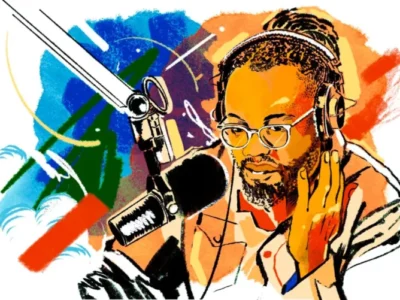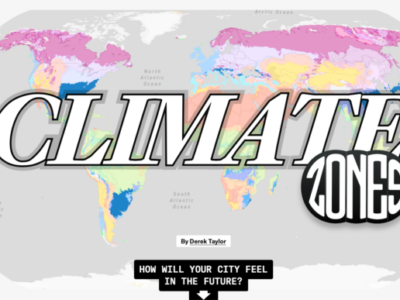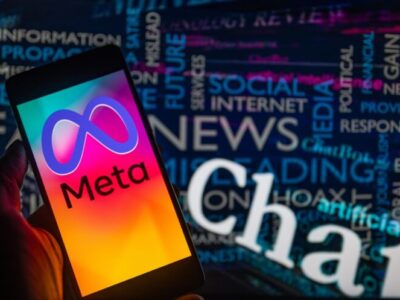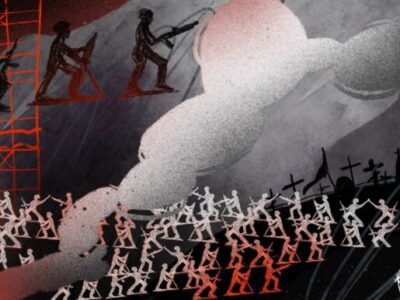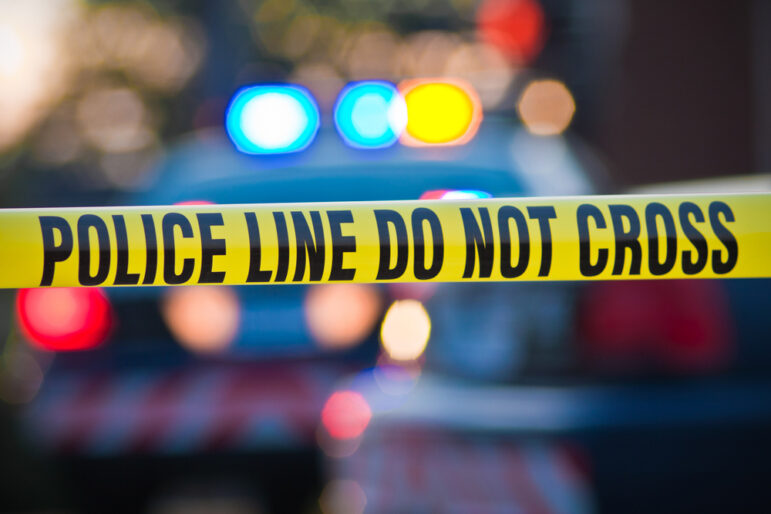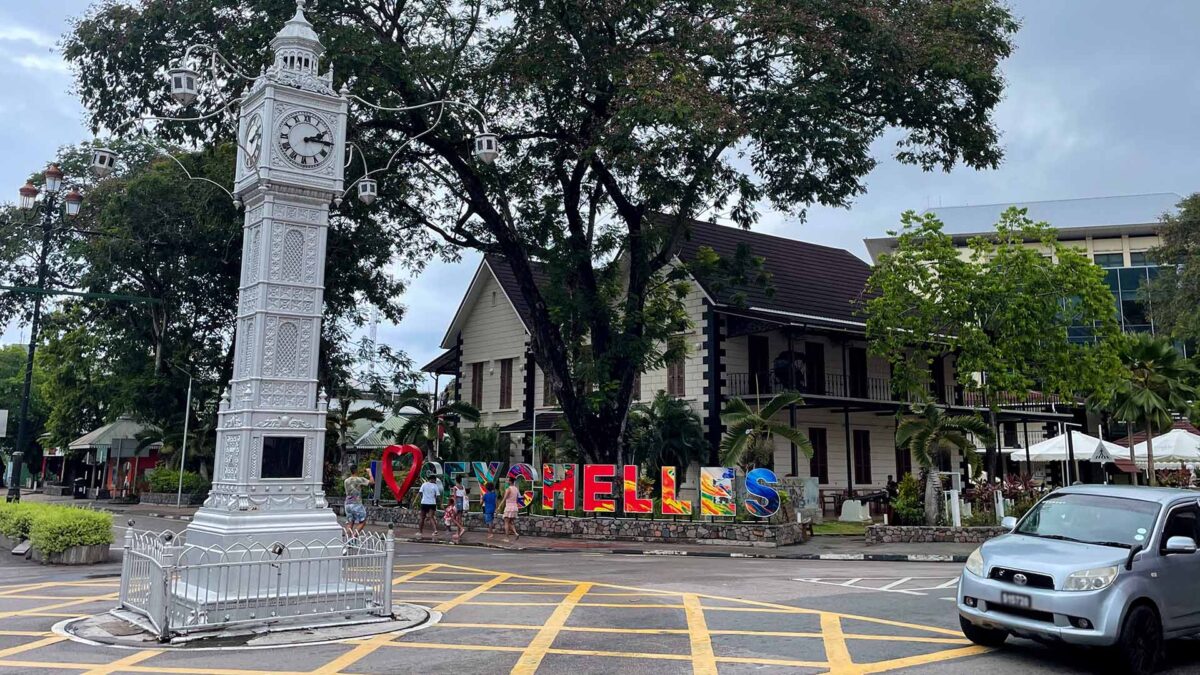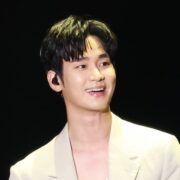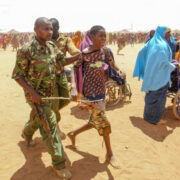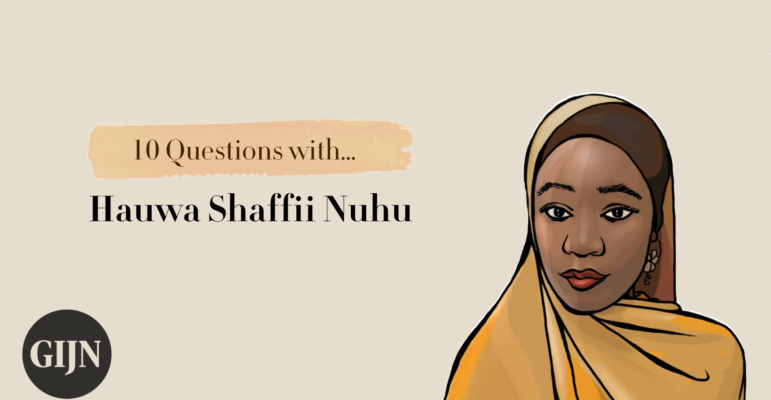
Conflict journalism in Nigeria has become extremely difficult in the last decade thanks to the increased frequency and escalation of terrorist attacks and insurgencies, and the violence and risks to which journalists are exposed.
Difficulty accessing hard-to-reach areas; direct threats; post-reporting trauma; censorship; and lack of financial resources — the obstacles for journalists can seem endless. There are only a handful of journalists on the conflict beat in Africa’s most populous democracy, and it tends to be a male-dominated field. Women journalists covering conflict issues in Nigeria are rare.
But Hauwa Shaffii Nuhu, the managing editor of HumAngle, an investigative nonprofit and media platform founded in 2020, is changing that narrative. HumAngle (a portmanteau of “human angle”) focuses on the human costs of conflict, terrorism, humanitarian, and development issues in Nigeria, enhancing its reporting with open source investigative methods, geographical information systems, data, and interactive and visual storytelling.
Shiffii Nuhu, who holds a law degree and transitioned into journalism from poet and essay-writing, has extensively documented the aftermath and effects of war on people through longform reports and visual documentaries. For a recent project funded by the International Women’s Media Foundation, Shaffii Nuhu documented the story of a teenager who had been abducted, raped, and forced into motherhood by Dogo Gide, a notorious bandit and terror kingpin who took the young woman during a mass kidnapping at a school in 2021. Shaffii Nuhu also produced a video and audio documentary — supported by the Pulitzer Center — on the Knifar organization in Nigeria’s northeast, a support group for women whose husbands have been disappeared or been arbitrarily detained that also functions as a pressure group advocating for their release. HumAngle’s consistent reporting on the issue led to some of these men being freed.
Shaffii Nuhu was recently selected for the prestigious Dart Center Ochberg Fellowship. HumAngle reporters have also won prestigious awards for their stories — such as the Michael Elliott Award for Excellence in African Reporting, Sigma Awards, and West African Journalist of the Year.
In this Q & A, part of GIJN’s ongoing interview series with leading investigative journalists, Hauwa shares her experiences doing conflict journalism in Nigeria, along with lessons and advice she has picked up on her journey.
GIJN: Of all the investigations you’ve worked on, which has been your favorite and why?
Hauwa Shaffii Nuhu: I am not sure in what context to translate the word “favorite,” but I would do so in the context of “most important.” At the moment, it’s the one I am currently working on, about a murder case in the rural parts of Nigeria. As it is not yet out, I cannot speak about it in detail.
But another that comes close would be my project for HumAngle on the survivors of the tragic Buni Yadi schoolboy massacre in 2014. Boko Haram — a militant group that forbids Western education — stormed the school, set fire to the boys as they slept, and shot those who tried to escape. I tracked down some of the survivors and wrote about their experiences in a series of reports and podcast episodes. It is one of the few bodies of work that exist to document the massacre and its aftermath accurately.
A close second is my project on the abduction of schoolgirls in Birnin Yauri in northwest Nigeria. Out of all the students abducted from the school and later released, 12 girls were held longer than the rest, for a total of two years. They were subjected to a lot of abuse, leading to some of them — one as young as 13 — to [fall pregnant]. It was a heartbreaking story that needed to be told, and I felt honored to have been able to tell it through a documentary and a report. We were able to show the emotional and psychological toll of mass abductions on not just the victims, but also their families.
GIJN: What are the biggest challenges in terms of investigative reporting in the region you report on?
HSN: The biggest challenge is fulfilling the right-of-reply and balance requirements. Speaking with state actors or authorities is exceedingly difficult, as they hardly respond to questions or provide help or pointers. Since journalists are seen more as opponents than allies, this slows down the progress of our work. A lot of time is spent trying to get hold of actors, and when we do get a hold of them, the responses are often evasive or just insufficient.
This response is important because it not only balances the story but ensures that the stakeholders capable of influencing change or acting on it acknowledge the issues raised in the story. As a journalist, it is a sacred thing to have people trust you with their grief and scars. To know that you have the ability to pass that grief onto others in a way that can not only move, but has a chance to influence impact or policies, is something. It is a responsibility I ponder regularly. However, the meaningful change aspect is affected when relevant actors don’t bother to acknowledge the issues.
GIJN: What’s been the greatest hurdle or challenge that you’ve faced in your time as an investigative journalist?
HSN: I don’t know that there is one single greatest one, but sometimes going into rural areas, especially as a conflict reporter, can be challenging. I’ve had to make trips to northeastern Nigeria, which proved dangerous, to speak to sources that I would not have been able to talk to otherwise.
The work that conflict reporters do is critical because it is usually the only chance to expose wartime atrocities. Often, we tell stories that people find shocking and difficult to digest. Sometimes, it angers them — and this is important because anger drives change — but when we see the reactions, it also reminds us of just how much we have not been able to uncover or investigate because of the threat of danger in conflict-affected villages.
HSN: What is your best tip or trick for interviewing?
HSN: There are so many, and in fact, my favorite thing is to teach. One: Do not panic when there is a stretch of silence when interviewing someone. Allow the silence to sit and stretch.
Another tip is to make sure you get their consent, even for things you think they already know. For example, tell them you will be recording the interview and ask if that is okay. Always tell them why you are doing the story. And mirror their words to them occasionally during the interview so they are prompted to provide clarity or more context.
Also, maintain eye contact and take minimal notes — this is why recording is the best way. We know that one barrier to getting extensive responses is that sources are often hyper-aware that a journalist’s job is to report, and so they become careful — sometimes too careful — with their words.
When you humanize the process — by removing formalities, making eye contact, and acknowledging things you notice about them — it helps the process.
GIJN: What is a favorite reporting tool, database, or app that you use in your investigations?
HSN: It’s probably my iPhone: the camera, the recording app, but also Google Docs.
GIJN: What’s the best advice you have received thus far in your career, and what words of advice would you give an aspiring investigative journalist?
HSN: The most useful lesson I’ve learned so far is from my editor-in-chief — Ahmad Salkida. The lesson is never to be satisfied with the ordinary or with mediocrity. Always go the extra mile. If there’s even the tiniest possibility that you may uncover more if you stay longer at an interview, go somewhere else, speak to an additional person, or ask to extend your deadline, do it. The story — and your work as a journalist — will be better for it.
GIJN: Who is a journalist you admire, and why?
HSN: There are many: Sally Hayden, Kunle Adebajo, Line Vaaben, Dele Olojede. They all have one thing in common: the ability to humanize and to move and feel.
GIJN: What is the greatest mistake you’ve made and what lessons did you learn?
HSN: One error I made in the early days was that I would spend a lot of time researching the topic and my sources before going into the field, but not enough time researching the location itself. I have come to realize that both types of research are equally important. It’s important to know beforehand the community you are going into — what kind of network carriers work best there, if electricity is steady, and if not, to take multiple power banks, the language spoken, and other little, but important, things.
GIJN: How do you avoid burnout in your line of work?
HSN: I take what I like to call preemptive self-care measures. Before going to the field for a story I know will be particularly difficult or distressing, I try to prepare mentally and assemble a number of emotional tools that could help me through it. I also make sure to take occasional breaks whenever I need them.
GIJN: What about investigative journalism do you find frustrating, or do you hope will change in the future?
HSN: I hope state actors begin to become more willing to respond to questions from journalists.

